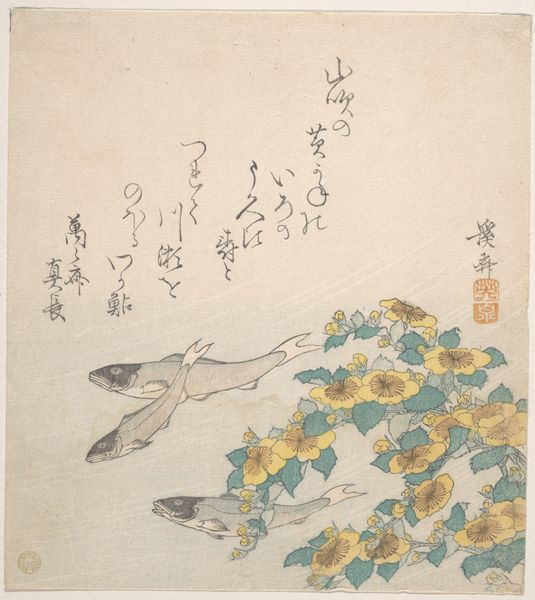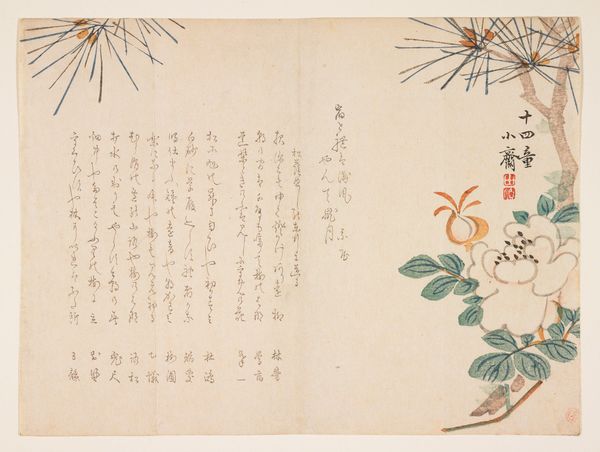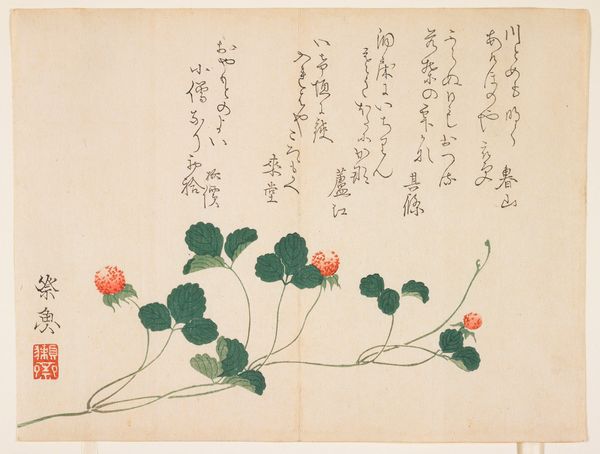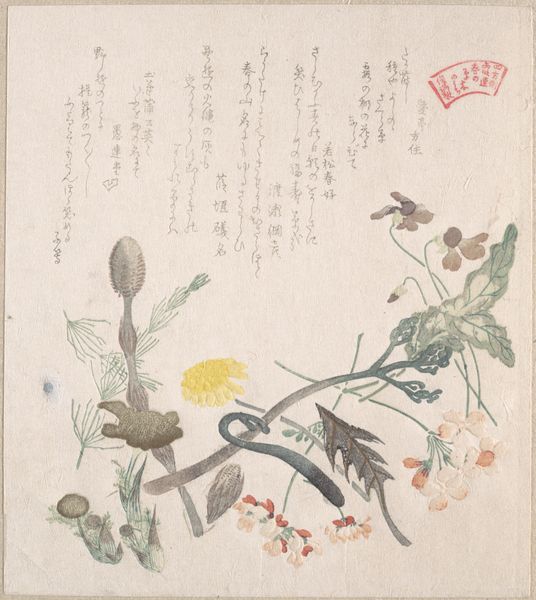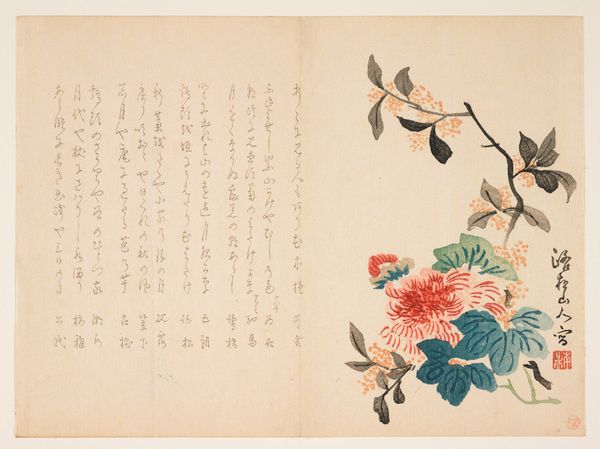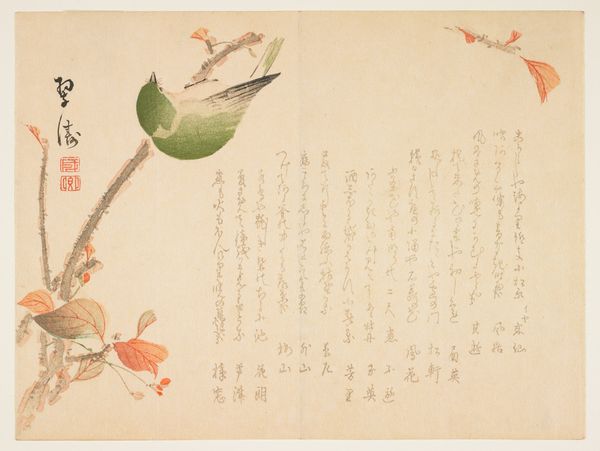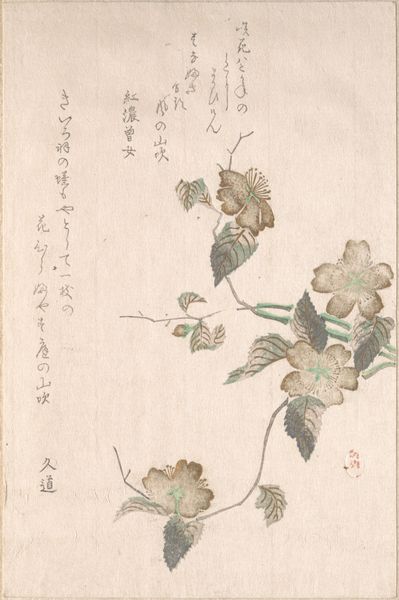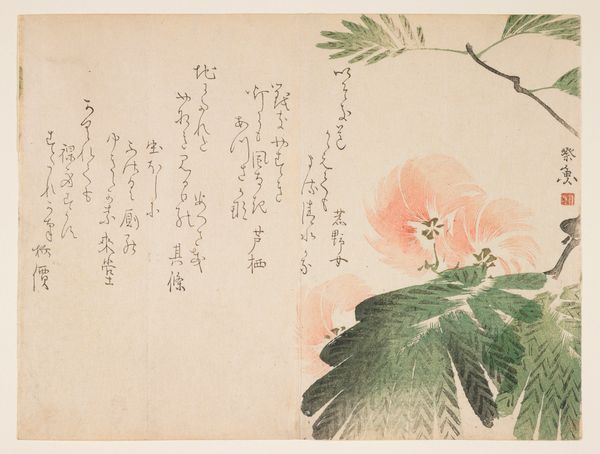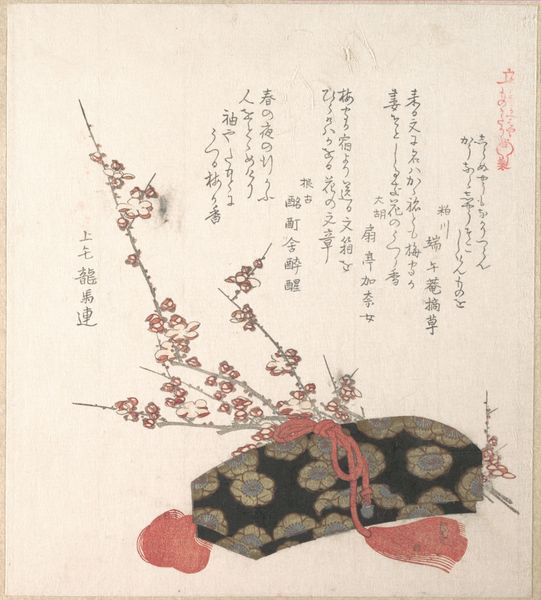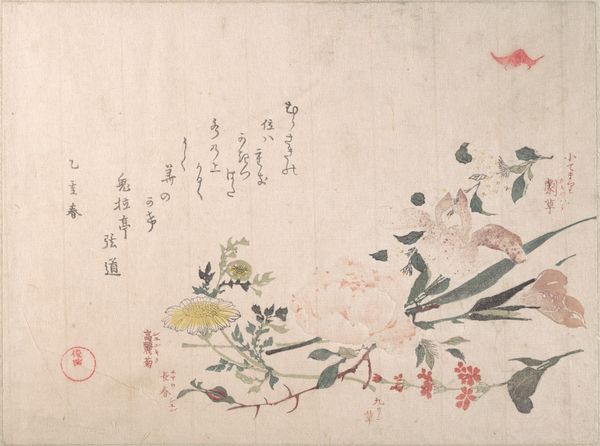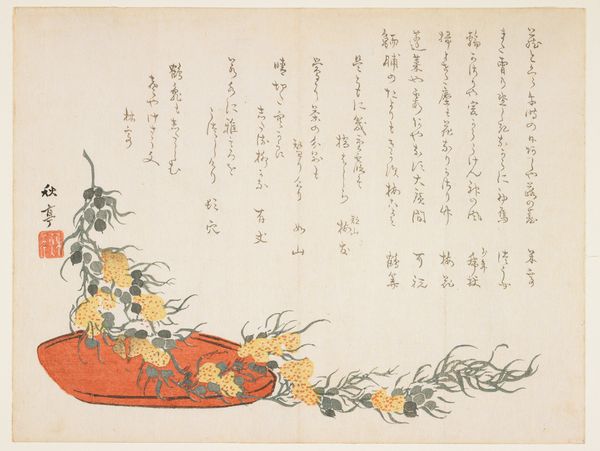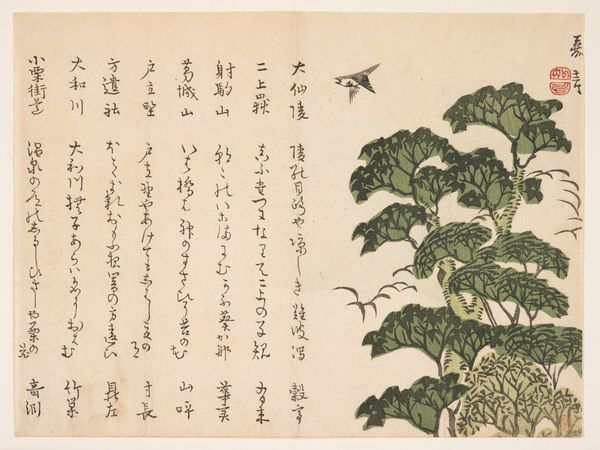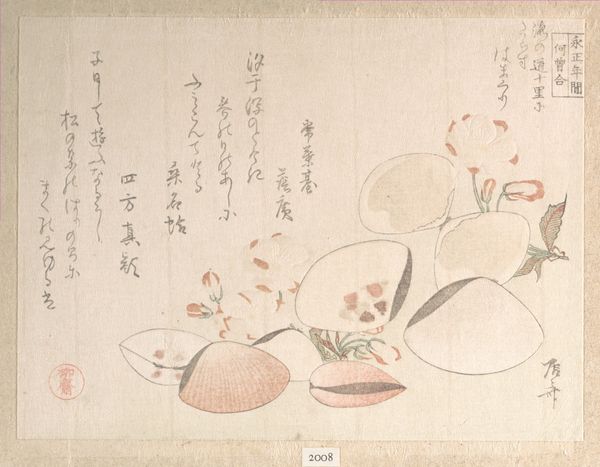
Sweet Fishes of the Nagara River, with Baskets and Flowers 19th century
0:00
0:00
painting, print, woodblock-print
#
fish
#
painting
# print
#
asian-art
#
ukiyo-e
#
woodblock-print
#
botanical art
Dimensions: 5 11/16 x 7 1/2 in. (14.4 x 19.1 cm)
Copyright: Public Domain
Editor: This lovely print, "Sweet Fishes of the Nagara River, with Baskets and Flowers," is by Ryūryūkyo Shinsai, from the 19th century. The combination of fish, flowers and what looks like a woven fishing net creates such an appealing still life. What historical context can you give to this beautiful composition? Curator: This piece falls into the ukiyo-e tradition, "pictures of the floating world." But thinking about ukiyo-e historically means recognizing its relationship to socio-economic shifts in Japan, and the rising merchant class in the Edo period. It wasn’t just about pretty pictures. The imagery here would likely appeal to this emerging class of merchants and city dwellers. Editor: Ah, so the flowers and the fish, while aesthetically pleasing, were also pointing to specific economic changes and rising social groups. Curator: Exactly! These prints, because they were relatively affordable, helped shape the cultural landscape and provided an important visual language that bound people together. Think of them as almost proto-advertising in that way; how the artist arranges symbols became key to success. This focus on consumer culture made art and the ownership of imagery much more accessible, even while maintaining an awareness of hierarchy in visual depictions. Where do you think the artist makes commentary, visually? Editor: I didn't see it that way before! I thought of it only as aesthetically pleasing; it changes the whole idea when considering what sectors of society could afford them, too! Curator: Right? That interplay of economics and representation becomes crucial to interpreting images like this. Seeing Shinsai's work in that historical frame gives the imagery another layer of interpretation and reveals the power relations inherent in producing images. Editor: Thank you! It’s fascinating to see how cultural shifts influenced what was created and who it was for. Now I can think about the other socioeconomic ripples beyond just this individual object and collection. Curator: Absolutely. And recognizing these systems can open up fresh understandings and critical dialogues!
Comments
No comments
Be the first to comment and join the conversation on the ultimate creative platform.
